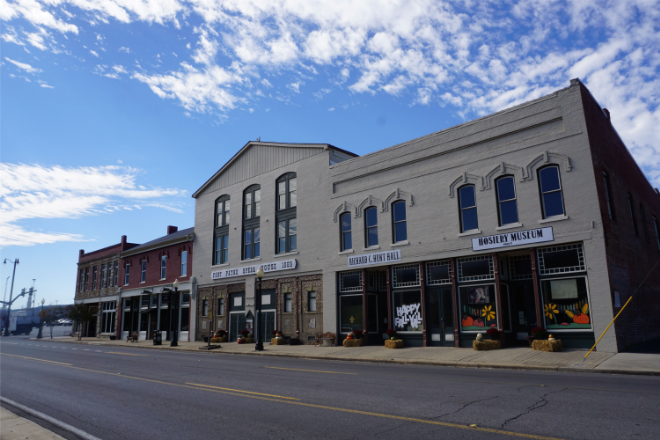Historic Markers and History Driving Tour
Historic Markers and History Driving
Tour Travel Itinerary
Begin your journey in downtown Fort Payne, where your first stop is the Fort Payne Cabin Historic Site on 4th Street South. Here, you’ll discover the remnants of an 1838 log stockade, including a stone chimney that stands as a testament to the town’s rich past. Next, make your way to 5th Street North and explore Fort Payne City Park, where there are markers that highlight DeKalb County’s Cherokee history and a striking statue of a Civil War soldier. Just a short walk away are the Fort Payne Depot Museum and Opera House, both offer captivating glimpses into the area’s history through their significant markers.
While in the area, take a moment to visit the Fort Payne Hosiery Museum, where you can step back into the boom days of the sock mills by viewing materials, machinery, and photographs that show how this industry shaped Fort Payne’s industrial legacy. Cross the railroad tracks to Godfrey Avenue, heading south to 3rd Street to delve into the history of the forced removal of Native Americans along the Trail of Tears, marked by poignant historical plaques. Travel north on Godfrey Avenue to 38th Street, where you’ll arrive at the Willstown Mission & Cemetery, a sacred burial ground from the early 1800s that offers a profound connection to the region’s Native American heritage.
From here, take a scenic drive up Lookout Mountain to DeSoto State Park. While there, you can explore the CCC Museum, which brings to life the legacy of the Civilian Conservation Corps and their 1930s projects. For the more adventurous, there’s the option to hike to an old CCC Rock Quarry or the unfinished bridge (for more maps & information click here). While on the mountain, stop by the breathtaking DeSoto Falls, one of Alabama’s most stunning waterfalls, perfect for a peaceful break amidst nature’s beauty. Continue your journey to Mentone, a charming mountaintop village. While enjoying the quaint atmosphere, stop for lunch at Seabolt’s Street Tacos, or the Mentone Market.
Afterward, descend the mountain toward Valley Head, where you’ll find the historic marker for Battelle, a once-thriving coal and iron ore town that now stands as a ghostly reminder of the past. From Valley Head, travel to Council Bluff School, the last remaining one-room schoolhouse in DeKalb County, where history comes alive through its enduring structure. Return to Fort Payne for dinner, where you can unwind and savor a meal at one of the town’s local restaurants, such as Rib Shak or Burrito Jalisco. Take time to reflect on your day of exploring the rich history of DeKalb County.







Morning: Downtown Fort Payne
- Fort Payne Cabin Historic Site (4th Street South).
- Visit City Park (5th Street North) for Cherokee history markers and a Civil War statue.
- Explore the Fort Payne Depot Museum and Opera House nearby.
- Stop by the Fort Payne Hosiery Museum to see exhibits on the town’s sock mill history.
- Cross the tracks to Godfrey Avenue, head to 3rd Street for Trail of Tears markers.
- Continue to the Willstown Mission & Cemetery (38th Street).
Afternoon: DeSoto State Park
- Visit the CCC Museum and take optional hiking trails.
- Stop at DeSoto Falls for scenic views.
- Visit Mentone for a brief stroll & stop for lunch at Seabolt’s Street Tacos, or the Mentone Market
Evening:
- Descend to Valley Head to see the historic marker for Battelle.
- End at Council Bluff School before heading back to Fort Payne for dinner at Rib Shak or Burrito Jalisco.











